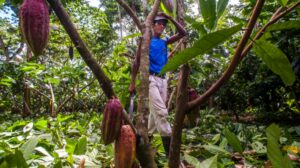We owe the indigenous cultures of America the art of harvesting and processing cocoa, a fruit that is the protagonist of today’s material. There are many stories surrounding this fruit, but the most important thing that we can recognize today is its more than 22 varieties of species that exist. The history of Costa Rica has also been forged in large part thanks to this fruit, which in the past was an indispensable part of the economy of this region.
Historical data from the harvest of this fruit

Cocoa was cultivated in Central and South America thousands of years ago, for the Mayans and Aztecs cocoa was a gift from the gods, also in Costa Rica cocoa has always been one of the most cultivated plants even taking into account its medicinal properties.
In this way, it is appropriate to comment that cocoa and corn are plants that have been deeply rooted in the heart of our people. Today in different parts of the world, cocoa from this land is considered a high-quality fruit, it could be defined as fine and one of the most valuable crops in the world.
Cocoa production is an art that is more alive than ever

Our meeting today will take us to talk with Oscar Castro Zúñiga, a cocoa farmer, who tells us that his interest in this fruit began at the beginning of his professional career when he had the opportunity to investigate a little more in-depth cocoa cultivation. There he discovered that the same process can be ecologically taking place and that the cultivation and harvesting process has become for him a unique aspect that he wanted to continue learning about.
A crop during climate change
For Zúñiga, cocoa cultivation is very easy to adjust due to the system in which it is produced, which will favor the mitigation of climate change. Since one could speak of an adaptive process.
When he was approached about what is the most difficult during the cocoa harvesting process, he emphatically answers that it is an integral process, it is not just having the cocoa, but taking care of that quality throughout the process, among them the fermented one stands out and the drying aspects that will allow a successful harvest and a fruit that is pleasant to the palate.
Finally, he sees the current markets as very different from the markets of the past, which makes the product that will reach the final consumer a quality product. This aspect is usually accompanied. But in contrast to this, it makes it more difficult for the farmer to finish the cultivation process and at the same time meet these requirements for the development of small farms.

For those who have experienced shifts in consciousness and know that more peace, joy, and love awaits in a better living environment. A bold shared vision. A living community and hub for innovation. A sustainable ecosystem for living and working. A model for the new future.
